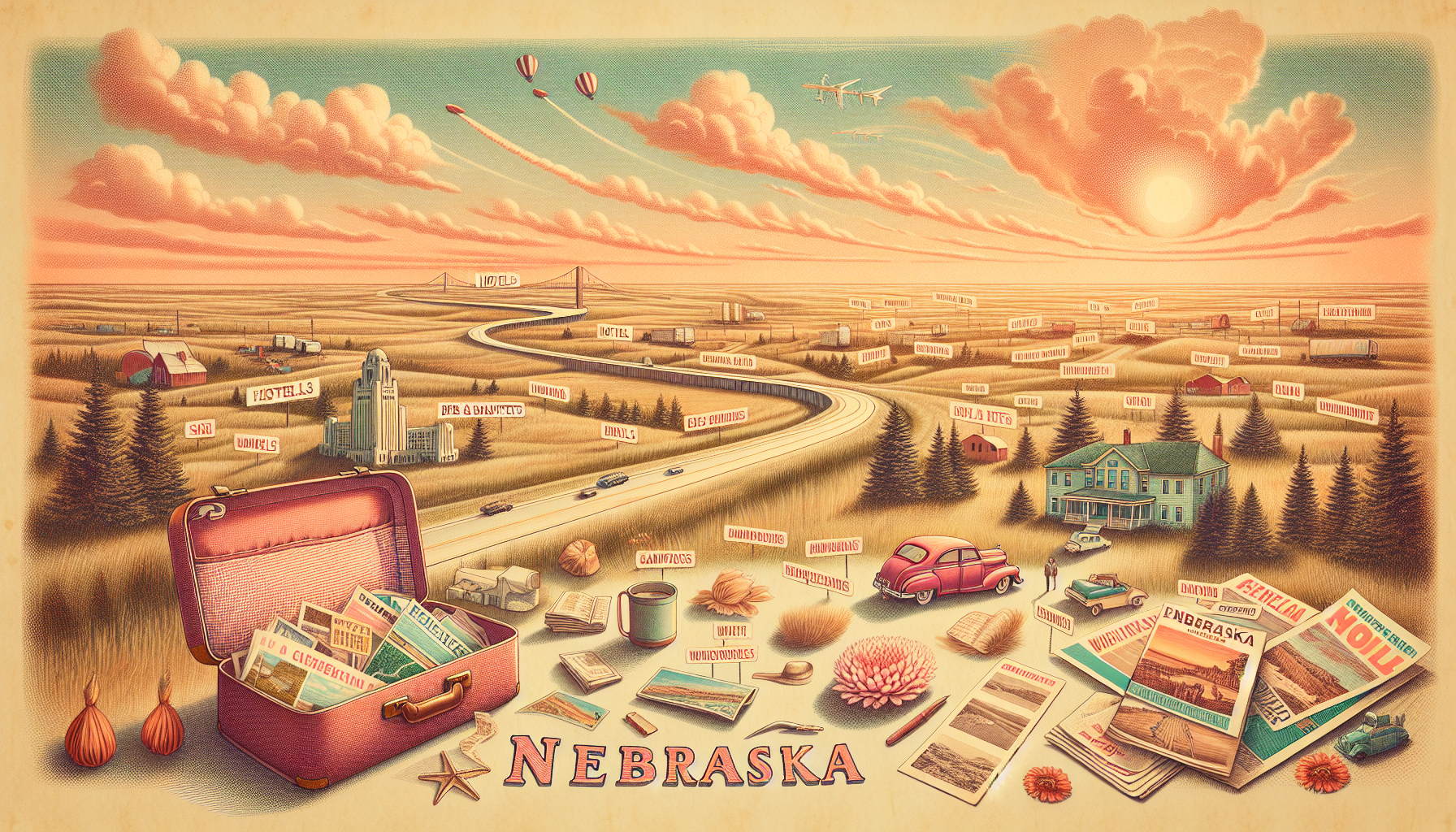Grassland Conservation in the American Heartland

Traveling through Nebraska, one of the most striking features of the landscape is the rolling hills of grass that stretch as far as the eye can see. The Great Plains, which Nebraska is a part of, are home to some of the most biodiverse and ecologically important grasslands in the world. However, despite their significance, these grasslands are facing numerous threats, including habitat fragmentation, overgrazing, and climate change. As a result, grassland conservation has become a major priority for researchers, policymakers, and conservationists.
One of the most effective ways to conserve grasslands is through the use of conservation easements. Conservation easements are agreements between landowners and conservation organizations that restrict development and human activities on a parcel of land in exchange for financial compensation. For example, the Nature Conservancy has worked with landowners in the Sandhills region of north-central Nebraska to establish conservation easements that protect over 100,000 acres of critical grassland habitat. These easements not only provide a safe haven for wildlife, but also help to maintain the ecological integrity of the grasslands.
Another important approach to grassland conservation is the use of prescribed fire. Prescribed fire is a management tool that involves the controlled burning of grasslands to mimic the natural fire cycle that occurred in these ecosystems prior to European settlement. By using prescribed fire, land managers can maintain the diversity and health of the grasslands, while also reducing the risk of catastrophic wildfires. For example, the US Fish and Wildlife Service has used prescribed fire to manage the grasslands at the Rainwater Basin Wetland Management District in eastern Nebraska, which provides critical habitat for migratory birds and other wildlife.
Grassland conservation is not just important for wildlife, but also for agriculture and human well-being. Grasslands play a critical role in maintaining soil health, filtering water, and sequestering carbon. In fact, the Soil Conservation Service estimates that the grasslands of the Great Plains store over 2 billion metric tons of carbon dioxide equivalents, which is equivalent to removing over 400 million cars from the road. By conserving grasslands, we can also help to maintain the productivity and resilience of agricultural systems.
In addition to conservation easements and prescribed fire, researchers are also exploring new technologies and approaches to grassland conservation. For example, the use of drones and satellite imagery is becoming increasingly popular for monitoring grassland health and detecting early signs of drought and degradation. This information can then be used to inform management decisions and optimize conservation efforts. Additionally, researchers are also exploring the potential for grassland restoration to sequester carbon and mitigate the effects of climate change.
Despite the many successes of grassland conservation, there are still significant challenges to be addressed. One of the biggest challenges is the lack of funding and resources for conservation efforts. In Nebraska, for example, the state's Natural Resources Commission estimates that over 30 million acres of grassland are in need of restoration, but the costs of doing so are estimated to be in the tens of millions of dollars. Additionally, the fragmentation of grassland ownership and the lack of coordination between landowners and conservation organizations can also make it difficult to achieve conservation goals.
Overall, grassland conservation is a critical issue in the American Heartland, and Nebraska is at the forefront of these efforts. By using a combination of conservation easements, prescribed fire, and new technologies, we can help to protect these vital ecosystems and maintain the health and productivity of the Great Plains.
One of the most effective ways to conserve grasslands is through the use of conservation easements. Conservation easements are agreements between landowners and conservation organizations that restrict development and human activities on a parcel of land in exchange for financial compensation. For example, the Nature Conservancy has worked with landowners in the Sandhills region of north-central Nebraska to establish conservation easements that protect over 100,000 acres of critical grassland habitat. These easements not only provide a safe haven for wildlife, but also help to maintain the ecological integrity of the grasslands.
Another important approach to grassland conservation is the use of prescribed fire. Prescribed fire is a management tool that involves the controlled burning of grasslands to mimic the natural fire cycle that occurred in these ecosystems prior to European settlement. By using prescribed fire, land managers can maintain the diversity and health of the grasslands, while also reducing the risk of catastrophic wildfires. For example, the US Fish and Wildlife Service has used prescribed fire to manage the grasslands at the Rainwater Basin Wetland Management District in eastern Nebraska, which provides critical habitat for migratory birds and other wildlife.
Grassland conservation is not just important for wildlife, but also for agriculture and human well-being. Grasslands play a critical role in maintaining soil health, filtering water, and sequestering carbon. In fact, the Soil Conservation Service estimates that the grasslands of the Great Plains store over 2 billion metric tons of carbon dioxide equivalents, which is equivalent to removing over 400 million cars from the road. By conserving grasslands, we can also help to maintain the productivity and resilience of agricultural systems.
In addition to conservation easements and prescribed fire, researchers are also exploring new technologies and approaches to grassland conservation. For example, the use of drones and satellite imagery is becoming increasingly popular for monitoring grassland health and detecting early signs of drought and degradation. This information can then be used to inform management decisions and optimize conservation efforts. Additionally, researchers are also exploring the potential for grassland restoration to sequester carbon and mitigate the effects of climate change.
Despite the many successes of grassland conservation, there are still significant challenges to be addressed. One of the biggest challenges is the lack of funding and resources for conservation efforts. In Nebraska, for example, the state's Natural Resources Commission estimates that over 30 million acres of grassland are in need of restoration, but the costs of doing so are estimated to be in the tens of millions of dollars. Additionally, the fragmentation of grassland ownership and the lack of coordination between landowners and conservation organizations can also make it difficult to achieve conservation goals.
Overall, grassland conservation is a critical issue in the American Heartland, and Nebraska is at the forefront of these efforts. By using a combination of conservation easements, prescribed fire, and new technologies, we can help to protect these vital ecosystems and maintain the health and productivity of the Great Plains.
